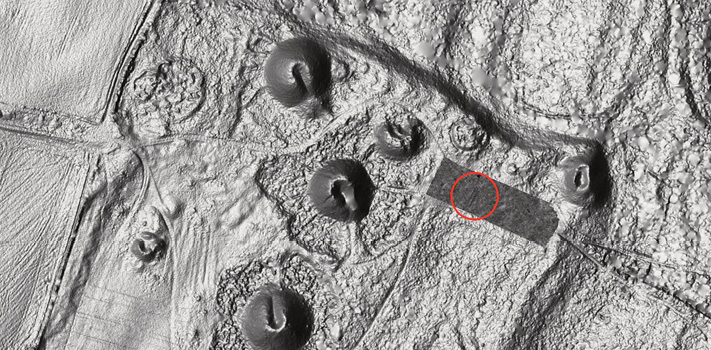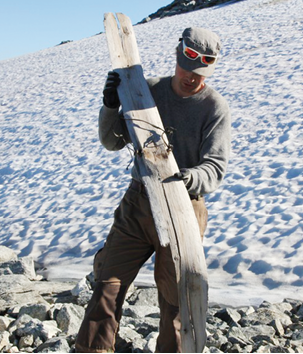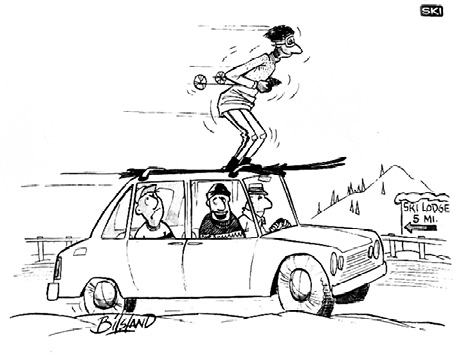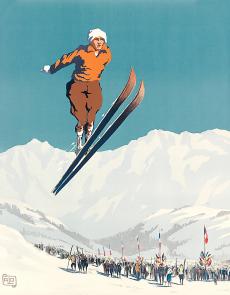
SKIING HISTORY
Editor Kathleen James
Art Director Edna Baker
Contributing Editor Greg Ditrinco
ISHA Website Editor Seth Masia
Editorial Board
Seth Masia, John Allen, Andy Bigford, John Caldwell, Jeremy Davis, Kirby Gilbert, Paul Hooge, Jeff Leich, Bob Soden, Ingrid Wicken
Founding Editors
Morten Lund, Glenn Parkinson
To preserve skiing history and to increase awareness of the sport’s heritage
ISHA Founder
Mason Beekley, 1927–2001
ISHA Board of Directors
Seth Masia, President
Wini Jones, Vice President
Jeff Blumenfeld, Vice President
John McMurtry, Vice President
Chan Morgan, Treasurer
Einar Sunde, Secretary
Richard Allen, Skip Beitzel, Michael Calderone, Christin Cooper, Art Currier, Dick Cutler, Chris Diamond, David Ingemie, Rick Moulton, Wilbur Rice, Charles Sanders, Bob Soden (Canada)
Presidential Circle
Christin Cooper, Billy Kidd, Jean-Claude Killy, Bode Miller, Doug Pfeiffer, Penny Pitou, Nancy Greene Raine
Business & Events Manager
Kathe Dillmann
P.O. Box 1064
Manchester Center VT 05255
(802) 362-1667
kathe@skiinghistory.org
Membership Services
Laurie Glover
(802) 375-1105
laurie@skiinghistory.org
Corporate Sponsorships
Peter Kirkpatrick
(541) 944-3095
peterk10950@gmail.com
Bimonthly journal and official publication of the International Skiing History Association (ISHA)
Partners: U.S. Ski and Snowboard Hall of Fame | Canadian Ski Museum and Hall of Fame
Alf Engen Ski Museum | North American Snowsports Journalists Association | Swiss Academic Ski Club
Skiing History (USPS No. 16-201, ISSN: 23293659) is published bimonthly by the International Skiing History Association, P.O. Box 1064, Manchester Center, VT 05255.
Periodicals postage paid at Manchester Center, VT and at additional mailing offices. Postmaster: Send address changes to ISHA, P.O. Box 1064, Manchester Center, VT 05255
ISHA is a 501(c)(3) public charity. EIN: 06-1347398
Written permission from the editor is required to reproduce, in any manner, the contents of Skiing History, either in full or in part.
Short Turns (July-August 2020)
Maple Valley offered a variety of ski trails on its 1,000-foot vertical drop served by two chairlifts and a T-bar, as shown in this late 1980s trail map.
New Beginning for Maple Valley
Lost Vermont ski area starts over as a brewery…with a long-term plan to bring skiing back. By Jeremy Davis
Over the last few decades, many of Vermont’s former ski areas have reopened or found new life as backcountry slopes. Magic, Ascutney and the private High Pond are now lift-served again, while Dutch Hill, Hogback and Timber Ridge (with permission) are available for hike-to skiing. Maple Valley, a lost ski area in the southeast corner of the state, will soon begin its own renaissance.
Located on Sugar Mountain, Maple Valley was a classic family ski area. It was built by the Pirovane brothers, who owned the North Haven (CT) Construction Company, along with Terry Tyler. Opening in 1963, the first lifts included a beginner’s T-bar and chairlift. Five trails ran from the summit on a 1,000-foot vertical drop.

Maple Valley’s location off Route 30, fifteen minutes north of Brattleboro and I–91 and a gateway to other southern Vermont ski areas, made it easily accessible to skiers from western Massachusetts and Connecticut. Crowds became common, and in 1966, another chairlift was added to relieve lift lines. In the 1970s, snowmaking helped alleviate a lack of natural snow at this low-elevation ski area.
Peaking in popularity in the early 1970s, Maple Valley changed little into the 1980s, and in 1988 financial difficulties closed the ski area for a year and it was auctioned off. New owners reopened the area for the 1989–1990 season and made some modest improvements, including a halfpipe. More financial problems ensued, and the ski area closed in 1996.
Maple Valley was sold at a foreclosure auction the following year to Frank Mercede and Son Inc., owned by Nick Mercede. It reopened for one final season in 1999–2000 on a limited basis.
Over the next decade, Mercede made plans to rejuvenate the property. But it needed significant investment to compete with larger ski areas 45 minutes to the northwest, and his plans to add off-season activities like concerts and mountain biking did not receive local approval. Maple Valley remained dormant.
That’s all about to change. Sugar Mountain Holdings, an investment group led by Keane Aures, purchased the former ski area and base lodge on May 23, 2018 for $745,000. The group has initial plans to open a craft brewery and distillery made with Vermont products inside the former base lodge.
The lodge, while in need of renovations, is structurally sound. Its interior features plenty of natural wood with large windows overlooking the ski slopes. Existing tables will be reused for seating. The group also intends to make the entire building energy efficient. An iconic giant trail map on the exterior, visible to drivers on Route 30, will be cleaned up and remain on display.
The new owners are optimistic that the process of slowly reopening the ski area could begin in the next several years, depending on the success of the brewery. Dormant since 2000, the slopes are overgrown. The archaic diesel-powered chairlifts, although spun a few times for maintenance in the last two decades, are now most likely beyond the point of salvage. In addition, flash flooding caused damage to the lower slopes in the past year.
Although the brewery and distillery are the main priorities, some of the former ski trails may be cleared so backcountry skiers can earn their turns and hikers can ascend in warmer months. In five to ten years, the existing lifts could be removed and replaced with a single chairlift to the summit, along with new snowmaking. The aim is to eventually make Maple Valley an authentic throwback ski area — a unique alternative to the larger areas not far away. And while skiers may chuckle at the concept of a beer-fueled ski operation, it’s nothing new. Fred Pabst, heir to the famous Milwaukee brewing family, founded nearby Bromley and created the country’s first skiing conglomerate when he owned 16 small ski areas in the Midwest, East and Canada. Pabst, a member of the U.S. Ski and Snowboard Hall of Fame who died in 1977, was a snowmaking pioneer and innovator with lifts.
Sugar Mountain Holdings is intent in building good relationships with the local community, where it already has obtained local permits. State approval is currently pending.
It will take a long time for Maple Valley to be a full-fledged ski area again. But by the end of 2020, Maple Valley hopes to welcome visitors, this time to enjoy a craft brew or drink in a classic Vermont setting. Readers can follow Sugar Mountain’s progress at sugarmountainvt.com, where details on the development will be posted.
So Long, Squaw Valley?
Squaw Valley Ski Resort in California may change its name to remove the word “squaw,” a derogatory term for Native American women. As coast-to-coast protests forced a national reckoning about racial inequality in America, resort president and CEO Ron Cohen said in mid-July that the company was taking inventory of the many places that the name appears — both on and off the property — and assessing how much it would cost and how to manage the switch. California tribes have requested this move many times over the years, but only now is the proposal gaining traction.
Derived from the Algonquin word for “woman,” over time the word evolved into a misogynist and racist epithet, said Vanessa Esquivido, a professor of American Indian Studies at California State University, Chico. “That word is an epithet and a slur. It’s been a slur for a very long time,” she told the Reno Gazette-Journal. She explained that when settlers first arrived in the 1850s, they saw Native American women working in a meadow near the Lake Tahoe resort, and that may be how the area got its name.
Cohen said it would be a long and expensive process to remove “squaw” from the resort name. It appears on hundreds of signs and is printed on everything from trail maps and marketing material to uniforms and vehicles. In a statement, he said that resort management is meeting with shareholders, homeowners and local business leaders, as well as local Washoe tribal leadership. He didn’t yet know when a decision on the potential name-change would be made.
Washoe chairman Serrell Smokey supports the name change and suggested “Olympic Valley” as a replacement. —Associated Press, Reno Gazette-Journal
Fernie: 9 Legends and One Myth
Fernie Skiing Heritage inducted its Class of 2020 on March 6, 2020. Established in 2012 to celebrate the 50th anniversary of the Fernie Alpine Resort in the southern Canadian Rockies, in British Columbia, the mini-museum maintains a permanent Ski Wall of Fame in the Cornerstone Lodge that includes photographs and displays honoring the region’s pioneers. More than 130 attendees showed up to celebrate the contributions of the evening’s honorees.

A highlight of the evening was the induction of Griz—a legendary man, myth and snow god of the southern Canadian Rockies. —Mike Delich (Founder, Fernie Skiing Heritage and Wall of Fame; FIS Technical Director Emeritus, former board member, Alpine Canada)
60 Years of Utah Factoids
In writing ski articles about Utah for 60 years, you encounter all sorts of quirky quotes and factoids. Some disappear like the mist; others become encamped in your brain. Here are a few from the latter category:
• In 1957 I asked Bob Barrett, Utah’s bulldozer operator-turned uranium mining multi-millionaire, why he invested a good portion of his newfound fortune in developing Solitude Ski Area. “It’s the only business I know where people stand in line in a blizzard to pay you money,” he said.
• To lure Japanese skiers to Snowbird in the 1970s, the fledgling resort launched a campaign that included trail signs, menus, trail maps and lodging brochures printed in Japanese. A major “whoops” occurred when translators could not match the name of a ski run derived from the name of resort developer Dick Bass. The word? “Bassackwards.” —Mike Korologos
Skiing History Underground
Researchers using ground-penetrating radar have found what may be a buried Viking Age longship in the town of Horten in Norway. Until the ship is excavated, examined and archaeologically dated, much remains unknown. But most of the burial mounds uncovered to date by scientists from the Midgard Viking Center are from the Viking Age (793–1066).

University of Oslo.
In addition to a ship, a burial mound almost always contained possessions. At Tune, there’s a burial mound of a man whose possessions indicate high status: In addition to his longship, the mound contains the remnants of horses, a sword, spearheads, chainmail, a saddle, and parts of a ski.

Tom Kolstad photo.
From the radar images, the Horten contents suggest that the man was expected to travel to the afterworld on skis or on horseback, and to do battle on his journey there.

Longship burial mounds are often located in marshes, where the acidic environment destroys wooden objects, like skis. So the best places to look for Viking-era skis are mountain ice fields that in prehistory may have been crossed by travelers or foraged by hunters. In 2014, a 1300-year-old ski was found in Norway in the Reinheimen ice field (“Home of the Reindeer”), evidence that hunters had been there on skis more than 13 centuries ago. The Reinheimen Ski is 172 centimeters long and 14.5 centimeters wide. Remarkably, that’s about the same dimensions as the laminated ash wood cores now made by Skibaumarkt of Germany (https://www.skibaumarkt.de/en/) for those who wish to build their own. —M. Michael Brady 
SNAPSHOTS IN TIME
1959: WHO SAYS THIS IS A NOVICE TRAIL?
In the days when the rope tow was the mainstay of ski areas, it was relatively easy and inexpensive to provide separate slopes for each class of skiers. But with the introduction of the chairlift, originally intended to serve only more experienced skiers, the situation changed. Operators found that the attractions of the chairlift tempted beginners to ski way over their heads. To alleviate the problem, they cut novice trails from the top of the mountain over lengthy but gentle routes. This solved one problem, but created others. These novice trails frequently merge with more-advanced trails, or worse, advanced trails branch off novice trails. The answer seems to be a radical increase in trail marking. —John Southworth (SKI, December 1959)
1968: TEENY-TINY SKI HOUSE
The “Nutshell” house is an 8-by-18-foot cubicle that comes completely furnished, with kitchen, bath and sleeping spaces for five people. The little house is like a ship’s cabin inside, with the addition of wall-to-wall carpeting and a fireplace that warms the space in 15 minutes. The price is $4,000—delivery and connection to sewage, power and water are extra. The buyer’s best bet is to lease a lot from Acorn for $180 a year at Killington (Vermont), Jackson (New Hampshire) or Sugarloaf (Maine). —SKI (February 1968)
1978: HERE WE ARE, BUT WHERE ARE WE?
You know the kind of skier who strives to prove they are “in” by using names that are officially “out?” They insist on calling Aspen Mountain “Ajax” or referring to Vail’s Tyrolean Inn and Garton’s as the Blue Cow and the Casino, so you’ll know they were here before the masses followed them. Well, snobbery is getting to be more difficult with a spate of new names for ski areas that are actually old names, revived. You can no longer get insider points by referring to the area on the back side of Stowe as Smuggler’s Notch instead of its second-generation name, Madonna Mountain. You’d now have to call it Madonna Mountain because management has given it its third-generation name: Smuggler’s Notch. And now comes Keystone’s purchase of A-Basin. Throughout the 70s, Rocky Mountain skiers have been proving their pioneerhood by using the area’s original name, Arapahoe Basin. Sorry. The Keystone folks have changed the name back to Arapahoe Basin, so the in-name is the one that was the out-name before last May. —SKI (December 1978)
1989: MOVE TO PENTURBIA
Jack Lessigner, professor emeritus from the University of Seattle, and a land and urban development economist, predicts that by 2010, one-third to one-half of the American and Canadian middle class will live outside metropolitan and suburban areas. Many of these people will move to the mountains, where resorts will develop a four-season economy. He has identified “rural-urban counties” with small-town populations but big-city resources: ready access to university education, the lively arts, computer data banks and good communications via modems and fax machines. His “best bet” counties for growth include Grafton, New Hampshire (Cannon Mountain, Loon Mountain, Waterville Valley); Carroll, New Hampshire (Attitash, Cranmore); Green, New York (Hunter Mountain, Windham); Lamoille, Vermont (Stowe); Emmet, Michigan (Boyne), and Summit, Utah (Deer Valley, Park City). —MORTEN LUND (SNOW COUNTRY, FEBRUARY 1989)
1989: GOING UP IN SMOKE
Perhaps no other aspect of the total ski experience is as traditional as returning home after an invigorating day on the slopes to sit in front of a roaring fire. But the air-pollution problem linked to wood-burning fireplaces and stoves stems from the fact that many picturesque Western ski valleys are encircled by high mountains. This terrain, combined with common temperature inversions, creates a situation in which air pollution simply cannot escape. Thus, the atmospheric conditions that frequently contribute to terrible build-ups of air pollutants create similar conditions in many mountain resort towns, especially in the Rockies and High Sierra. —GEORGE RAU (SNOW COUNTRY, JUNE 1989)

SKI February 1968



Table of Contents
2020 Corporate Sponsors

World Championship
($3,000 and up)
Gorsuch
Intuition Sports, Inc.
Polartec
Sport Obermeyer LTD
Warren and Laurie Miller
World Cup ($1,000)
Aspen Skiing Company
BEWI Productions
Bogner
Boyne Resorts
Country Ski & Sport
Dale of Norway
Darn Tough Vermont
Descente North America
Dynastar | Lange | Look
Fairbank Group: Bromley, Cranmore, Jiminy Peak
Gordini USA Inc. | Kombi LTD
HEAD Wintersports
Hickory & Tweed Ski Shop
Mammoth Mountain
Marker-Völkl USA
National Ski Areas Association (NSAA)
Outdoor Retailer
POWDR Adventure Lifestyle Corp.
Rossignol
Ski Area Management
Ski Country Sports
Snowsports Merchadising Corporation
Sports Specialists Ltd.
Sun Valley Resort
Vintage Ski World
World Cup Supply, Inc.
Gold ($700)
Race Place | BEAST Tuning Tools
The Ski Company (Rochester, NY)
Thule
Silver ($500)
Alta Ski Area
Clic Goggles
Dalbello Sports
Dill McWhorter Driscoll LLC
Ecosign Mountain Resort Planners
Holiday Valley
Hotronic USA, Inc. | Wintersteiger
MasterFit Enterprises
Metropolitan New York Ski Council
Mt. Bachelor
NILS, Inc.
Portland Woolen Mills
Russell Mace Vacation Homes
Schoeller Textile USA
Scott Sports
Seirus Innovations
SeniorsSkiing.com
Ski Utah
Snow Time, Inc.
Tecnica Group USA
Timberline Lodge & Ski Area
Trapp Family Lodge
Vuarnet
Western Winter Sports Reps Association
World Pro Ski Tour
For information, contact: Peter Kirkpatrick | 541.944.3095 | peterk10950@gmail.com
ISHA deeply appreciates your generous support!


